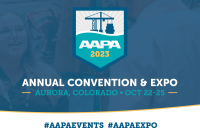Insider Intel on the INFRA Awards

The federal Infrastructure for Rebuilding America (INFRA) discretionary grant program is aimed at helping to rebuild America’s infrastructure and create jobs by funding multimodal freight and highway projects of regional and national economic significance.
In 2021, the United States Department of Transportation considered INFRA grant applications for the first time with an emphasis on how they would address climate change, environmental justice and racial equity. Four ports managed to crack the formula and received grants totaling $148.87 million — 16.45% of the $905.25 million available. This is how they did it.

The projects
The four port organizations to receive grants in 2021 were the Port of New York and New Jersey, the Georgia Ports Authority, PhilaPort (the Port of Philadelphia) and the South Jersey Port Corporation.
The Port of New York and New Jersey will use its $44 million INFRA grant on its Port Street Corridor Improvement Project, which is designed to help modernize “a vital, mission-critical” 2.9-mile stretch of roadway at the Port Newark marine terminal complex, said Amanda Kwan, spokesperson for the Port Authority of New York and New Jersey. The roadway, which hosts approximately 3,600 vehicles during a typical peak hour, includes a rapidly deteriorating access ramp between the port and U.S. Routes 1 and 9, I-78, and the New Jersey Turnpike.
The Georgia Ports Authority grant of $46,868,000 will go toward building a new inland container port along the I-85/I-985 corridor. The Northeast Georgia Inland Port, which is expected to open in late 2024, will be linked with the Port of Savannah by direct, 324-mile intermodal freight rail service, said Jamie McCurry, chief administrative officer for the Georgia Ports Authority.
PhilaPort received $49 million to construct a new multi-use berth that will accommodate roll-on/roll-off vessels. Ryan Mulvey, director of government and public affairs for the port, said the project will reduce truck idling times, and the increase in on-dock warehouse space that is part of the project is crucial to improving the efficiency of their operations. Mulvey said the project “wouldn’t be possible without the INFRA grant.”
The South Jersey Port Corporation received $9 million toward expansion of its barge capacity and intermodal rail connectivity at the Port of Salem. The project involves improvements to the port, including the reconstruction and dredging of the berth, and the expansion of the port’s footprint. The work will help strengthen the Port of Salem’s standing as a critical piece in the region’s offshore wind industry, including supporting the New Jersey Wind Port and a monopile manufacturing facility.
Collaboration Is Key
For grant applications to stand out, a collaborative approach is critical. Port representatives said that collaborating with private and public partners strengthens grant applications and demonstrates community support.
“Be sure to coordinate with all stakeholders to present a united front in the grant request,” McCurry said.
Kwan said the Port of New York and New Jersey’s grant application was a collaboration between agency staff and external port stakeholders. Internally, the port pooled expertise in areas such as engineering, project management, economic analysis, planning, government and community relations. Externally, the port communicated its plans and contract opportunities with community partners, sought input from tenants and the trucking community, and met with local legislators to discuss the benefits of the project for the region.
Before it applied for an INFRA grant, McCurry said the Georgia Ports Authority teamed with Norfolk Southern Railroad and Hall County, Georgia, to determine the ideal location for the inland port.
“With the partnership of local government and the rail service provider, GPA was able to show broad support for the project,” McCurry said.
Mulvey said Philaport worked closely with terminal operator Delaware River Stevedores to develop its project and application.
“We took a collaborative approach with them, sat down with them and figured out what their needs were, and hired an outside consulting firm and came up with a design,” Mulvey said. “They’re going to help with part of the local share, and they have buy-in and obviously that was important.”
Chris Perks, director of engineering for the South Jersey Port Corporation, said the Port of Salem project was developed in-house with the New Jersey Economic Development Authority, but included collaboration with an array of public and private partners.
“The interest from and collaboration with numerous energy, logistics and manufacturing companies from throughout the region and the world has informed the design and execution of this project,” Perks said. “Working with these entities to determine their needs helped us to mold the project into one that would not only be attractive to the grant funders but would also ensure that we were meeting the needs of our potential clients and the burgeoning offshore wind industry.”

Research and planning
An INFRA grant application not only requires 25 pages of narratives explaining the project, but a detailed cost estimate, a full benefit cost analysis narrative and a number of other materials. Research and thoroughness are of essential importance.
For instance, McCurry said the Georgia Ports Authority researched current container volumes to determine the potential positive impact on traffic congestion, carbon emissions and economic development of the project.
“Layer in sufficient time ahead of the grant deadlines to conduct supporting research on the likely economic and environmental benefits,” McCurry said.
Jonathan Atwood, chief of staff and external affairs for the South Jersey Port Corporation, noted that the benefit cost analysis, which pits the project’s costs against its expected benefits, is an integral requirement for the INFRA grants. The South Jersey Port Corporation’s proposal had a benefit cost analysis of 2.3:1, meaning benefits well exceeded costs.
Kwan said the Port of New York and New Jersey believes its application benefited from the port already vetting and planning its capital investments through the development of its Port Master Plan 2050, which provides a roadmap for the next 15 years of road- and rail-enabling projects to keep up with projected cargo volume growth — all with a focus on sustainability and resiliency.
Similarly, Andrew Saporito, executive director and CEO of the South Jersey Port Corporation, believes the agency’s track record with publicly funded projects, particularly completing them on schedule and within budget, helped its case in the INFRA grant application process. In fact, the Port of Salem project builds on a recently completed Port of Paulsboro redevelopment project that included the use of INFRA grant funds to help improve the rail network serving the port.
Mulvey said the earlier a port is prepared for a grant then the better its application will be.
“It’s never too early to start thinking about grant projects,” Mulvey said. “We’re sometimes too reactive as an industry. The time to think about your projects is before grants that can support them are announced. If you’re playing from behind, it makes it much more difficult to put forth a real comprehensive and complete application. With the historic investment that the federal government’s making in ports and infrastructure right now, I think it’s safe to go out there and look at some projects that you think you have a need for and start planning for them now. So when those notifications of funding opportunities are made, you’re ready to move.”
Grant Writers Strengthen Applications for Many Ports
Jonathan Atwood, chief of staff and external affairs for the South Jersey Port Corporation, said writing successful grant applications requires dedicated expertise.
“Grants are complex, multifaceted and time-consuming,” Atwood said. “Not only do they have to be well written, but they also need to ‘check all the boxes,’ both in the narratives and in the supplemental materials.”
Some ports can devote staff to grant writing, but many others turn to outside experts to tackle the work. There is a lot at stake.
“Right now, with the amount of money that’s being sent to invest in our ports and infrastructure, I think outside consultants are vital,” said Ryan Mulvey, director of government and public affairs for PhilaPort.
Ideally, a consultant will be “an integral part of your operations, on board with your goals and with a clear vision to help you attain them,” Atwood said. The South Jersey Port Corporation has worked with Triad Associates of Vineland for years on grant applications.
“Because we have worked together for so long, they understand us, what we do and where we are looking to go,” Atwood said.
Ports hoping to identify grant writers should seek consultants who understand the process and the funding agencies.
“This gives your consultant — and your application — a competitive advantage,” Atwood said. “Knowing what is expected allows the grant writer to include certain concepts, phrases and terminology that will help your application stand out in a crowded field.”
USDOT Goals
The ports that successfully secured grants noted their emphasis on highlighting how their projects addressed USDOT’s new stated emphasis on climate change, environmental justice and racial equity.
Climate change, in particular, was an area of focus for the ports in their applications. That aligns with the AAPA POWERS (Port Opportunities with Energy, Resilience and Sustainability) program, which advocates for federal policies investing in port infrastructure that supports America’s energy prowess, pragmatic decarbonization, technology for renewables and environmental sustainability.
Mulvey noted that climate has clearly emerged as a key priority for the federal government, pointing to climate’s central place in the Inflation Reduction Act.
“I think to successfully compete for one of these grants now climate has to be an aspect of your project,” Mulvey said. “The federal government is serious about addressing climate change.”
Saporito said the South Jersey Port Corporation’s application detailed “how the federal government’s investment in the project will further its goals to break our nation’s reliance on fossil fuels.” In addition to its focus on wind energy, the project will raise the port three feet, helping to mitigate the effects of climate change, and reduce emissions and congestion through a modal shift from trucking to barge transport.

“Wind power is incredibly important, as are any projects that help to reduce the nation’s reliance on fossil fuels,” Saporito said. “It’s important to fully understand the goals of the administration and ensure that your projects align with them.”
McCurry said the Georgia Ports Authority’s application benefited from the Northeast Georgia Inland Port’s potential to shift more containers from truck to rail in the region’s manufacturing and logistics corridor, and inland terminals’ capabilities reducing highway traffic and cutting carbon emissions. Based on projections, McCurry said the inland port would alleviate 36 million truck miles in Georgia highway traffic congestion in the terminal’s first year of operation.
“The growing use of rail will have positive environmental effects because rail transit is more fuel efficient and provides an overall reduction in emissions compared to all-truck transit,” McCurry said. “These benefits coupled with the project’s potential to lessen highway truck traffic were key aspects of the grant proposal.”
Both the South Jersey Port Corporation and the Port of New York and New Jersey highlighted the racial equity component of their projects by concentrating on the benefits for local workers.
“The populations around many of our facilities and, in particular, the Port of Salem are typically majority-minority populations,” Saporito said. “South Jersey Port Corporation will spotlight its commitment to underserved communities in the local area through its bid requirements of prospective contractors and sub-contractors and will work with local workforce development boards and educational institutions to ensure that the jobs that will be created by our projects can be filled with local talent.”
Kwan said the goals of the USDOT grants “closely aligned” with those of the Port Authority of New York and New Jersey.
“This critical safety project will help the seaport’s most diverse business segment: drayage truck drivers,” Kwan said. “Over 75% of drayage drivers at the port self-identify as minorities. To strengthen the seaport’s community engagement, the Port Authority and its maritime business partners work together through the Council on Port Performance to support job and education opportunities for local residents.”
In addition to the many tangible reasons that ports secured INFRA grants in 2021, Kwan pointed to the importance of the intangible. She said the success of the Port of New York and New Jersey’s grant application can be attributed in part to persistence, patience and a determination to make the adjustments necessary to secure a grant. Kwan said the port began applying for the grant each year starting in 2017.
“We applied for funding several years in a row before we succeeded,” Kwan said. “Each year, we requested a debrief on our grant application and refined our process with each resubmission.”
 For grant applications to stand out, a collaborative approach is critical. Port representatives said that collaborating with private and public partners strengthens grant applications and demonstrates community support.
For grant applications to stand out, a collaborative approach is critical. Port representatives said that collaborating with private and public partners strengthens grant applications and demonstrates community support.
 ISTOCK.COM/SPRINGSKY
ISTOCK.COM/SPRINGSKY
An INFRA grant application not only requires 25 pages of narratives explaining the project, but a detailed cost estimate, a full benefit cost analysis narrative and a number of other materials. Research and thoroughness are of essential importance.
 ISTOCK.COM/TURAC NOVRUZOVA
ISTOCK.COM/TURAC NOVRUZOVA
The ports that successfully secured grants noted their emphasis on highlighting how their projects addressed USDOT’s new stated emphasis on climate change, environmental justice and racial equity.




